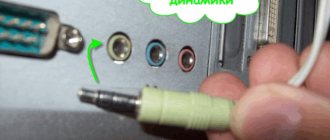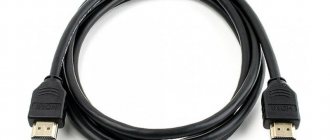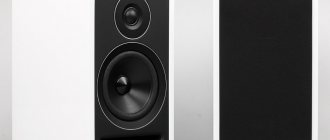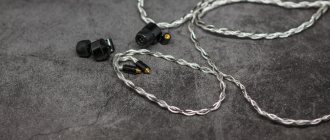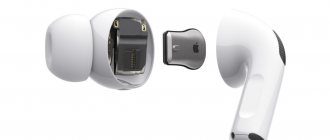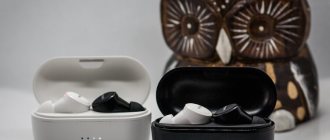CARDAS AUDIO
Interview with Cardas Audio Vice President Andy Regan
A modern audio cable embodies not only the technical potential of the manufacturer, but also its philosophy. The products of the American Cardas Audio even hide, in Plato’s words, “the key to the physics of space.” Andy Regan, the company's vice president of sales and marketing, will tell you more about this.
— People usually ask me how the inductance and capacitance of a cable affects its sound. In fact, these parameters are of negligible importance; the interaction of fields and the speed of signal propagation are much more important. Cardas Audio has been working on this for 25 years. But the most important thing in our business is not knowledge of technical aspects (although this is important), but love for music. George Cardas, the company's founder, is a true fan. In addition, he was engaged in professional sound recording and helped many musicians. He began his career at a telephone company, where he studied long-distance signal transmission and experimented with the first digital systems. During his work, George identified the relationship between conductor geometry, insulation quality and temporary distortions in the line. If signals of different frequencies have different propagation speeds, then it is very difficult at the receiving end to correctly “collect” the transmitted information. Some companies used transformers, intermediate amplifiers, etc. for matching, but this limited the bandwidth and increased noise and distortion. When designing his own cables, George set priorities as follows: 1 - quality of materials, 2 - geometry of the conductor, 3 - method and reliability of connection. Conductors are manufactured in-house in the eastern United States to ensure high quality copper.
— And geometry, as I understand it, is the famous “golden ratio”?
— George is confident that the golden ratio, or Fibonacci ratio, is the only correct solution when designing cables. Many consider this mystical, but it is a fact. A lot of things in the universe and in nature, incl. the human body has exactly these proportions. They are used in painting, architecture, and music. The company's logo is a nautilus shell - a classic example of the Fibonacci spiral, the same shape as our galaxy.
All Cardas cables have the golden ratio, i.e. the diameter of the conductors differs by 1.618 times. At the same time, the most important characteristics are improved - performance increases, losses decrease and the skin effect is less pronounced. True, the production of such cables required non-standard equipment; George made it from old telephone company machines.
— Do you also produce the tips yourself?
— Many cable companies use Neutrik, WBT, etc., but George prefers his own. He bought machines that made parts for racing cars and adapted them to produce terminals. Cardas is perhaps the only company that produces all types of connectors, including XLR. For this we use pure copper with rhodium plating. Agree, it would be stupid, given such high technologies for manufacturing the cable itself, to lose quality due to the terminals. And we do not use soldering, all connections are crimped, under pressure of 10 thousand pounds it is possible to obtain a monolithic structure, and it is impossible to determine by eye where the conductor meets the connector. And, I repeat, all these technical tricks are dictated by the love of music. Most of the company's employees were previously connected with show business in one way or another. For example, as a sound engineer, I worked with bands such as Nelson and Aerosmith. By the way, Fibonacci ratios are used in the construction of studios and the optimal placement of speaker systems. It's enough to be off by a couple of inches - and that's it, the sound stage won't be correct.
— What kind of copper do you use as a conductor?
— Whenever possible, we try to take oxygen-free 9N. But getting copper of such purity is only half the battle; you need to preserve it during the cable manufacturing process. All operations with uncovered conductors, incl. and installation of tips are carried out in a hydrogen environment. It takes about three working days to terminate an acoustic cable with a large number of cores. No machine can handle this; everything is done by hand. The best materials are used as a dielectric - Teflon and Kevlar, and Teflon tubes are used to form the cross-section geometry. This is very important for maintaining the integrity of the signal, because the dielectric charges and discharges as it passes, creating an electric field. This, in turn, affects the field of the conductor and distorts the signal. To neutralize this effect, AudioQuest, for example, uses batteries, and very successfully, but we solve the problem through the optimal combination of materials and geometry.
In video cables, incl. HDMI uses silver, digital uses silver-plated copper.
— Is the “golden ratio” capable of improving the quality of a video signal?
- Certainly. Especially with HDMI, where 18 lines need to be laid out with minimal interference, geometry is critical. The second problem with these cables is the installation of connectors. The tightness of the installation does not allow the use of crimping, but George came up with a setup for instant soldering using a laser, so the conductor does not have time to oxidize.
— As far as I know, counterfeit Cardas cables have appeared on the market. How can this kind of piracy be combated?
“You have no idea how much this bothered us.” We have to review quality complaints three to four times a day, and all of them relate to counterfeits purchased over the Internet. We even had to open a special service - you send us a cable, and for $25 we will establish its authenticity. The first question for the buyer is: is the packaging intact? It must have a number by which you can determine the origin of the product. Since all Cardas cables are made and cut in the USA, it's easier for us to keep track of these things. The biggest problem with counterfeits is in China itself - Chinese audiophiles love Cardas cables, but how do you know if they are real or not? We have created a special section on our website explaining what you need to pay attention to when purchasing. The first thing that should be alarming is the too low price; the original Cardas cannot be cheap.
— It is clear that the future of audio is connected with the development of network technologies. But in computer systems, the quality of cables is not given much importance; as a rule, an ordinary twisted pair cable is sufficient. Is there a threat to the cable industry if interconnects die out as a class?
— They said the same thing when the world switched to HDMI, then they realized that the quality of these cables radically affects the clarity of the picture. Now the market is beginning to demand high-quality USB connectors, although a couple of years ago no one thought about it. Although the main problem of this interface is completely different. Computer manufacturers do not care about what exactly goes to the output from the sound card; there may be interference comparable in amplitude to the useful signal, and no one cares. Formally, the information is read, and everything is OK. Although the USB cords themselves are also not a gift, they carry data and pulsed power in parallel, and one affects the other. In our interconnects, we use two separate cables that are protected from all types of interference. In combination with conductors made of ultra-pure copper and the best dielectrics, this gives a colossal effect. And of course, connectors. George came up with the idea of making them from zinc and rhodium plated. They are much stronger, and the sound is much cleaner. Until we tried it ourselves, we couldn't believe that a USB cable could affect the sound, but the difference was absolutely obvious. By the way, during our experiments it turned out that the iPad sounds better than the iPhone, although their audio path is almost the same. Most likely, due to the fact that the developers did not have to concentrate all the filling in a small area.
The second point that inspires confidence in the future is the massive distribution of portable players and, accordingly, the enormous demand for headphones. We have long been producing replacement cords for home models, for example, Sennheiser 600, with which the sound improves radically. At the upcoming High End Show in Munich we will give the public the opportunity to compare the sound of headphones with standard cords and ours.
Another growing segment is power cables; not only audiophiles, but also professionals working with audio are starting to buy them. These products cease to be an element of tweaking, but acquire the status of an obligatory part of the system.
So computer technology will give a new impetus to the development of audio, and I don’t just mean cables - asynchronous USB DACs, interfaces, converters are appearing, which use developments from High End Audio. And the quality of playback of files from hard drives is so high that it leaves no chance for CDs. But at the same time, the requirements for the level of other components of the system sharply increase, incl. and to cables.
share
Tags: CardasDirect speech
Cardas Hexlink Golden 5-C - soulful fake
The Cardas Hexlink Golden 5-C interconnect cable belongs to the company's top line. But we will talk about a copy or a fake, whichever is more convenient for you. The popularity of Cardas Hexlink Golden 5-C has created the effect that non-original cables have begun to appear on the market. And if you are an inexperienced person in this matter, then of course you can make a mistake, no matter where you buy it - on ebay, Yahoo or Aliexpress. Accordingly, copies can probably vary from complete props to good ones. A friend who bought such a cable in Japan told me that the “Japanese” Cardas Hexlink Golden 5-C plays very well, according to him, it was compared head-to-head with the original cables Ortofon Reference, Van Den Hoole, Monster Cable and turned out to be better than all of them, and advised me to try it.
As a result, I have a copy of Cardas Hexlink Golden 5-C and I’m glad that I can listen to it in my system (Yamaha p2100 + JBL 4312B MKII/Diatone DS-77Z + Saber9018 DAC + Muses8920 + AD797 + 2xR-Core).
What can happen when you plug in a new cable - it may be no different from what you had connected before, it may sound better or just different.
INSERT. Copies of cables from the original can be a real mess. Look at the contents of the cable with the same name:
The wires are placed as if in two isolated gaps.
But it looks like the same 5-C cut away from another supplier. We see that an air gap is used here, provided by a hollow tube in the middle, around which the rest of the cores are located.
END OF BOX
Before this, I used an XLR connection, which of course is superior to any RCA, this is obvious, and primarily in terms of higher musical resolution.
Before you continue reading, I will tell you that I am in no way advocating for any cables, buying original or copies or from a hardware store, tearing you away from an iron, coffee maker, meat grinder, etc. - this is your absolutely personal business and I don’t care It makes no difference what you buy, or whether you buy it at all, I am not on the payroll of any companies involved in trading anything, so I am only describing my impressions, what I heard is what I wrote.
Okay, let’s breathe out and move on.
The second point is that it happens that different cables have different sound patterns, there is no need to argue here, if you have not heard such a phenomenon before, then you should just listen. A trivial example that opens the eyes of a beginner - take an RCA noodle from a stall on the street and compare it by soldering a homemade gun from a Klotz MC5000 microphone cable.
Okay, let’s breathe out and move on.
Copy of Cardas Hexlink Golden 5-C.
It looks like a rather thick “hose” with massive RCA connectors. There are a lot of inscriptions, something about a USA patent, but I think on a branded cable they should probably be written out better, but who knows.
I turned it on in my system and I can immediately say that the cable is interesting and I liked it.
Here's what attracted me:
- The clone gave a very spacious sound, and at the same time the stage was the right size, and not exaggerated as I expected. A friend also told me about the volume of this cable. Here I completely agree with him, volumetric cable.
2. The sound is gentle, pleasant to the ear, musical, as they say. Whether it’s good or not, I want to listen to him.
One would wonder if it is due to the loss of resolution that it seems musical.
Indeed, after XLRs there is a certain loss of musical resolution (well, you are also comparing XLR with RCA - extravagant).
But suddenly a trumpet or saxophone comes in and it suddenly appears very precise, clear and juicy. Simply brilliant! At the same time, the localization is decent.
3. Vocals, they are shown sensually, captivatingly, and for this reason. There is a certain rounding of the sound of the voice. Let's take the very beautiful Diana Krall album “Quiet Nights”, where, in my opinion, not the most harmonious condenser microphone was used.
Of course, the sound of vocals very much depends on the condenser microphone used during recording - everyone has their own voice, there are microphones with a soft, velvety presentation, sweetish, and there are microphones with roughness, such as “digitals”, as in the album “Quiet nights”. If you doubt my words, there are sites on the Internet where you can listen to recordings of how different microphones of different prices sound and come to a similar opinion on your own.
So, a special feature of the cable is rounding, the rough edges of the voice, where there could be sibilance, are very affectionately softened. As if, instead of a sharp edge, you make it translucent in a graphics editor or throw on an airy veil, as if you quietly said pfff. This is how Cardas Hexlink Golden 5-C (copy) turns ugliness into natural after-sounds.
4. The cable is very detailed, but somehow selective. Here it can be compared with the Lite DAC-AH DAC with 8 multibits - it emphasizes what is important in its opinion, but in reality it is quite harmonious. The vocals are gentle, softened, and the trumpet is juicy, sparkling, in the highest musical resolution. I would also include a softened attack as a feature of the cable. Well, this is how it turned out, probably not optimal for nerves and drive, but great for jazz and hard rock.
I liked the cable for its surround sound (if your system is capable of showing volume) and beautiful gentle vocals with gentle endings.
If your equipment has an XLR connection, then I would choose exactly these (XLR) cables and an XLR connection; in other cases, when you need RCA, I now resort to using a copy of Cardas Hexlink Golden 5-C, I like it.
After reading the material, you can twist your finger at your temple, laugh at the wires listening, draw graphs and a cross-sectional view of the ear, but in reality, what is important for a person is what he hears, and the theory is useful speculatively in order to understand the technique of the process. Different cables sometimes have different sounds - why or why - this question can probably be answered by people involved in physics or similar sciences; many are only able to record their experience. After all, most discoveries in physics were based on primitive experiments - first we see the result, then we look for the answer.
I will also note that I still listen to equipment, not wires, but cables can make their contribution, the main thing is not to overestimate their importance and influence.
And now that’s it, let’s breathe in...
